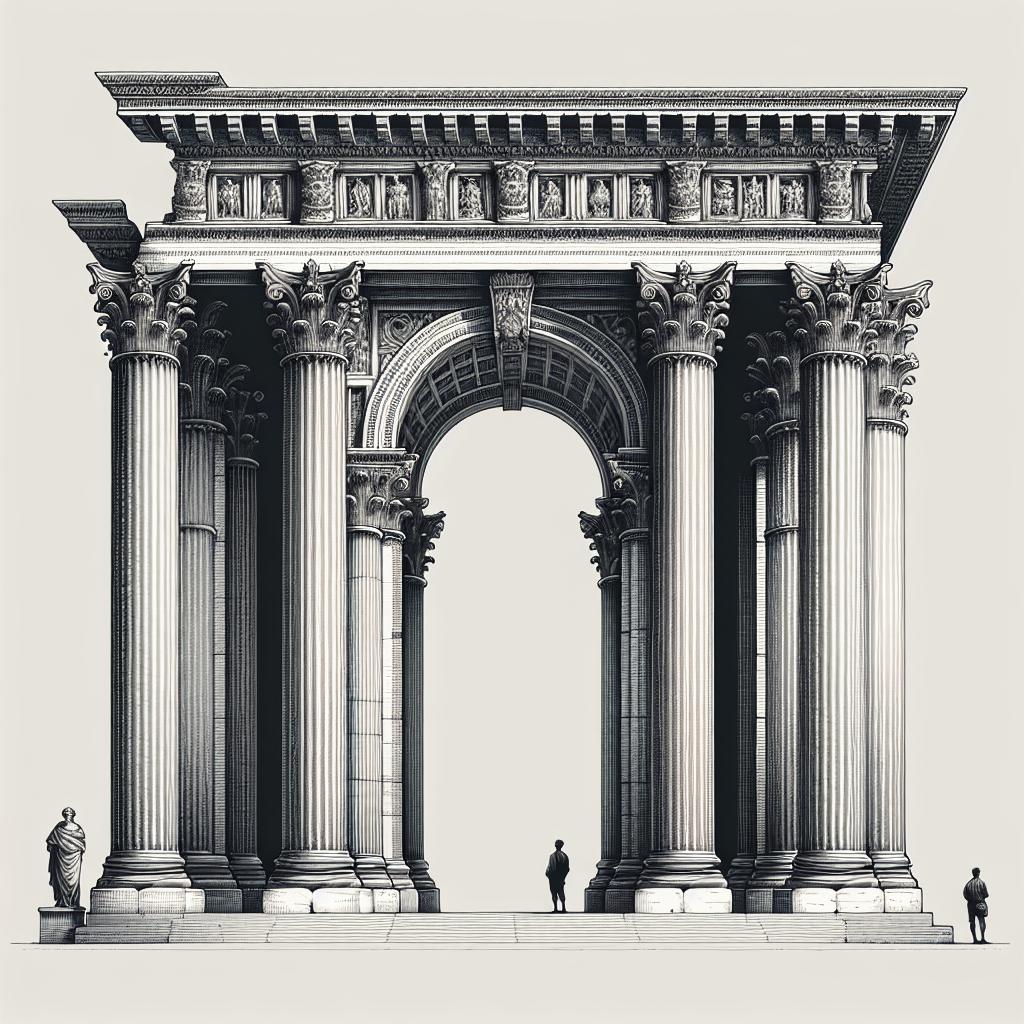Exploring the Elements of Classic Architecture Classic architecture encapsulates the grandeur and precision of ancient styles that continue to influence modern design. Rooted in the traditions of ancient Greece and Rome, classical architecture has been a quintessential aspect of architectural history, embodying principles such as symmetry, proportion, and the use of columns. This enduring style can be seen in both ancient monuments and contemporary structures, making a timeless impact on cultural and architectural landscapes worldwide. In this comprehensive exploration, we delve into the history and defining characteristics of classic architecture, present iconic examples like the Pantheon, Erechtheion, and Parthenon, and highlight interesting facts about its evolution and revivals. By understanding these core elements, we gain insight into how classical architecture has shaped and been reshaped over centuries, offering a foundation that remains relevant despite the passage of time. ### History Classic architecture traces its origins from the ancient civilizations of Greece and Rome. It represents a culmination of styles, techniques, and philosophies that date back to the 7th century B.C. in Greece. The Greeks developed a distinctive style characterized by the Doric, Ionic, and Corinthian orders, each defined by unique columns and entablatures. The Romans further refined these elements, incorporating arches, vaults, and domes to construct grandiose public buildings, temples, and arenas, which illustrate their advanced engineering skills and artistic expression. The Renaissance period saw a resurgence of classical architectural principles, as architects in Europe sought to revive the ideals of antiquity, blending them with contemporary styles of that era. This period marked the rebirth of classical architecture, leading to a heightened appreciation for balance, symmetry, and the use of decorative motifs. The influence of classical architecture persisted into the 18th and 19th centuries with the Classical Revival, as well as the Beaux-Arts movement, which often incorporated classical elements into elaborate structures. As the Industrial Revolution progressed, the principles of classical architecture continued to be adapted for new uses. With the advent of modern materials and technologies, architects could manipulate classical forms while creating buildings that fit the needs of a growing urban population. Thus, the history of classical architecture is a story of continuous evolution, reflecting societal changes and technological advancements while maintaining a connection to its ancient roots. ### Characteristics The defining characteristics of classical architecture revolve around the harmonious application of form, proportion, and symmetry, embodying an aesthetic that promotes order and balance. Classical buildings often employ the use of columns, which serve as both functional supports and ornamental features. The three main column styles—Doric, Ionic, and Corinthian—each come with distinct elements that range from the simple, austere lines of the Doric to the elaborate, acanthus-leaf-adorned Corinthian capitals. Another hallmark of classical architecture is the use of geometric clarity and proportion, often governed by mathematical ratios that create a visual sense of harmony. Facades are typically organized into a clear hierarchy of elements, with a strong emphasis on horizontality and verticality. Architectural features such as pediments, arches, and domes are skillfully integrated into this schema, contributing to the visual and structural integrity of the building. Furthermore, classical architecture is known for its use of decorative motifs, which draw inspiration from mythology, nature, and geometry. Ornate friezes, bas-reliefs, and moldings often depict scenes from legend or incorporate symbolic patterns. Such details enrich the illustrative power of classical architecture, imbuing structures with cultural and historical narratives that transcend time. ### Examples of Classical Architecture #### The Pantheon The Pantheon in Rome is a quintessential example of both the grandeur and innovation inherent in classical architecture. Originally commissioned by Marcus Agrippa and later rebuilt by Emperor Hadrian between A.D. 113-125, the Pantheon is renowned for its audacious dome and oculus. The structure’s harmonious proportions exemplify the classical architectural principles of symmetry and order, while the massive portico with its Corinthian columns affords a glimpse into the intricacies of classical design. Inside, the Pantheon’s coffered dome remains the largest unsupported concrete dome worldwide, a testament to the ingenuity of Roman engineering. The oculus at the dome’s apex lets natural light flood into the rotunda, moving across the interior space as the day progresses, adding a dynamic element to its interior beauty. The Pantheon’s enduring influence is evident in countless buildings across the globe, from Renaissance basilicas to modern-day capitols. #### The Erechtheion The Erechtheion, located on the Acropolis of Athens, presents a unique example of classical architecture with its asymmetrical design and legendary porch of Caryatids. Constructed between 421 and 406 B.C., the Erechtheion showcases the stylistic adaptability and cultural significance of classical architecture, as it was designed to accommodate the uneven terrain and religious purposes of the site. Distinct from other classical structures, the Erechtheion’s asymmetrical form and the incorporation of sculpted female figures as architectural supports on the porch—called Caryatids—highlight its cultural and aesthetic significance. The artistry and elegance of the Caryatids emphasize the Greeks’ ability to blend functionality with beauty, allowing the Erechtheion to stand as a testament to classical creativity and religious devotion. #### The Parthenon The Parthenon is perhaps the most iconic example of classical architecture, embodying the artistic mastery and intellectual spirit of ancient Greece. Built between 447 and 432 B.C. on the Athenian Acropolis, the Parthenon was designed by architects Ictinus and Callicrates under the supervision of the sculptor Phidias. Dedicated to Athena Parthenos, it is a peripteral temple with a rectangular floor plan, surrounded by a colonnade of Doric columns that epitomize the ideals of balance, proportion, and harmony. The Parthenon’s subtle refinements, such as its gently curved stylobate and entasis (slight swelling) of columns, correct optical illusions and create a sense of perfection in form. These intricate details, coupled with the sculptural friezes depicting mythological battles and religious ceremonies, reflect the cultural and political aspirations of Athenian society. The Parthenon remains a powerful symbol of Greek heritage, influencing countless architectural designs throughout history. ### Interesting Facts #### Classical Revival competed with Colonial Revival architecture. During the late 19th and early 20th centuries, Classical Revival architecture emerged as a prominent style in the United States, often competing with the Colonial Revival movement. While Classical Revival drew on ancient Greek and Roman elements, emphasizing grandeur and formality, Colonial Revival sought to revive the simpler, more utilitarian styles of America’s colonial past. This architectural competition reflected differing cultural values and aspirations, leaving a legacy of diverse historic neighborhoods and public buildings across the nation. The preference for either style often depended on regional and historical contexts, with Classical Revival found in civic buildings, state capitols, and educational institutions, where its imposing presence conveyed stability and tradition. Meanwhile, Colonial Revival architecture was popular in residential areas, offering a sense of nostalgia and national identity in its conservative form. #### Classical Revival architecture is similar to the Beaux-Arts style. Classical Revival architecture shares several characteristics with the Beaux-Arts style, which was popularized in the late 19th and early 20th centuries. Both styles emphasize symmetry, proportion, and ornate detailing, drawing inspiration from classical Greek and Roman ideals. However, Beaux-Arts architecture often integrates more elaborate and eclectic elements, influenced by Baroque and Renaissance precedents, resulting in highly decorated and grand buildings. The Beaux-Arts style is characterized by its use of mixed materials, opulent interiors, and a strong sense of theatricality. Public buildings, museums, and mansions from this period often prominently feature grandiose entrances, extensive staircases, and rich ornamentation, resonating with the opulence of European palaces. As such, while Classical Revival and Beaux-Arts architecture are closely related, the latter showcases a more ostentatious approach to classic form and decoration. #### Modern Architecture brought an end to the Classical Revival style. The rise of modern architecture in the mid-20th century gradually overshadowed the popularity of Classical Revival, as architects embraced minimalist designs, new materials, and forward-thinking philosophies. Modern architecture focused on functionality, simplicity, and the rejection of historical ornamentation, marking a departure from the traditionalism of classical architecture. Figures like Le Corbusier, Mies van der Rohe, and Frank Lloyd Wright championed innovative materials such as steel and glass, as well as open floor plans that prioritized light and air, influenced by the advent of the machine age. As modern architecture gained momentum, it dramatically altered the built environment, leading to a marked shift away from the grandeur and formality of previous styles. #### You can purchase a Classical Revival home. The enduring appeal of Classical Revival homes means that they continue to be a desirable option for contemporary homeowners. These homes often feature key elements of classical design, such as columns, symmetrical facades, and grand entrances, offering a timeless aesthetic that reflects elegance and tradition. Purchasing a Classical Revival home allows you to own a piece of architectural history, as these properties often embody craftsmanship and detail that’s become rare in modern construction. Renovating or restoring a Classical Revival home can give you the chance to merge classical elegance with modern conveniences, ensuring these historic structures remain functional and relevant. The purchase of such a home provides not only a beautiful living space but also an opportunity to connect with architectural heritage while preserving it for future generations. ### What Is Classical Architecture? Classical architecture is a building tradition that has been deeply rooted in the practices and philosophies of ancient Greek and Roman architecture. It revolves around the principles of symmetry, proportionality, and geometric precision, typically manifested through elements like columns, pediments, and entablatures. This style spans across diverse historical eras, from the grandeur of ancient temples and civic buildings to the revival styles of the Renaissance, such as Neoclassicism and Beaux-Arts. In essence, classical architecture goes beyond its utilitarian purpose, conveying aesthetic and cultural symbolism. This enduring architectural approach seeks harmony between structure and function, resulting in a timeless elegance that transcends historical periods and regional boundaries. Its elements are so intrinsically bound to art and beauty that they continue to inform and inspire architectural design today. ### Facts Classical architecture is distinguished by its use of the classical orders—Doric, Ionic, and Corinthian—which provide structure and ornamentation. These styles determine various elements of a building’s design, from column heights to decorative capitals. Notably, the Corinthian order, with its intricate leaf motifs, became synonymous with Roman imperial architecture. The rise of modern architecture challenged the continued dominance of classical styles, but it also led to the emergence of Postmodernism, which often adopted classical references in a playful or ironic manner. Postmodern architecture signaled a return to ornament and historical context, even as it embraced contemporary construction materials and technology. Despite shifts in architectural trends, classical architecture retains a universal appeal, reflected in its inclusion in education and preservation efforts. Many academic institutions continue to teach classical principles, ensuring that these foundational elements remain relevant to future generations in architecture and design. ### Final Thoughts The legacy of classical architecture is seamlessly woven into the fabric of architectural history, offering a profound influence that has stood the test of time. With its origins in ancient civilizations and its impact continuing through various revival periods, classical architecture communicates principles of beauty, proportion, and cultural significance. As we reflect on its enduring relevance, it is clear that classical architecture will continue to inspire and inform, providing both a touchstone and a source of innovation in the field of design for years to come. “`html
| Section | Summary |
|---|---|
| History | Explores the origins of classical architecture in ancient Greece and Rome, its influence during the Renaissance, and its continued evolution alongside societal advancements. |
| Characteristics | Details key characteristics such as symmetry, proportion, use of columns, and decorative motifs that define classical architecture. |
| Examples of Classical Architecture | Highlights iconic structures like the Pantheon, Erechtheion, and Parthenon that embody the principles and artistry of classical architecture. |
| Interesting Facts | Discusses factors like the competition with Colonial Revival, links to Beaux-Arts, the decline during the rise of modern architecture, and the prospect of owning Classical Revival homes. |
| What Is Classical Architecture? | Defines classical architecture as a tradition rooted in ancient Greek and Roman practices, emphasizing symmetry, geometry, and aesthetic symbolism. |
| Facts | Presents interesting facts related to the classical orders, the impact of modern and postmodern movements, and the ongoing relevance of classical principles. |
“`


